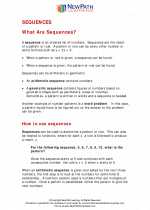Runoff
Runoff refers to the flow of water over the land surface when the soil is saturated and cannot absorb any more water. This typically occurs after heavy rain or during the melting of snow and ice. Runoff can have significant impacts on the environment, including erosion, water pollution, and the alteration of natural water flow patterns.
Factors Affecting Runoff
The amount of runoff generated by a particular area depends on several factors, including:
- Rainfall intensity: Higher intensity rainfall leads to more runoff as the soil cannot absorb the water quickly enough.
- Slope of the land: Steeper slopes tend to produce more runoff as the water flows downhill more rapidly.
- Soil type: Soils with low permeability, such as clay, produce more runoff than sandy soils.
- Vegetation cover: Vegetation can help to reduce runoff by absorbing some of the water and reducing erosion.
- Human activities: Urbanization, deforestation, and agriculture can increase runoff by altering the natural landscape.
Effects of Runoff
Runoff can have several significant effects on the environment, including:
- Erosion: Excessive runoff can lead to soil erosion, which can degrade the quality of the land and cause sedimentation in water bodies.
- Water pollution: Runoff can carry pollutants such as fertilizers, pesticides, and oil, contaminating rivers, lakes, and oceans.
- Altered water flow: Excessive runoff can lead to flooding in low-lying areas and reduce the availability of water in other areas.
Preventing and Managing Runoff
There are several strategies for preventing and managing runoff, including:
- Conservation practices: Implementing soil conservation techniques such as terracing, contour plowing, and cover cropping can reduce erosion and runoff.
- Stormwater management: Constructing retention ponds, green roofs, and permeable pavement can help to capture and slow down runoff in urban areas.
- Riparian buffers: Planting and maintaining vegetation along water bodies can help to absorb runoff and reduce water pollution.
- Education and outreach: Educating the public about the impacts of runoff and promoting responsible land use practices can help to reduce its effects.
Study Guide
When studying the topic of runoff, it's important to understand the factors that contribute to runoff, its effects on the environment, and strategies for preventing and managing it. Here are some key points to focus on:
- What are the main factors that contribute to runoff?
- How does runoff impact the environment?
- What are some strategies for preventing and managing runoff?
- What are the potential consequences of unchecked runoff in urban and rural areas?
It's also helpful to review specific examples of runoff management projects and to consider the role of government regulations and policies in addressing runoff issues.
.◂Math Worksheets and Study Guides Eighth Grade. Sequences

 Worksheet/Answer key
Worksheet/Answer key
 Worksheet/Answer key
Worksheet/Answer key
 Worksheet/Answer key
Worksheet/Answer key
 Worksheet/Answer key
Worksheet/Answer key
 Worksheet/Answer key
Worksheet/Answer key
